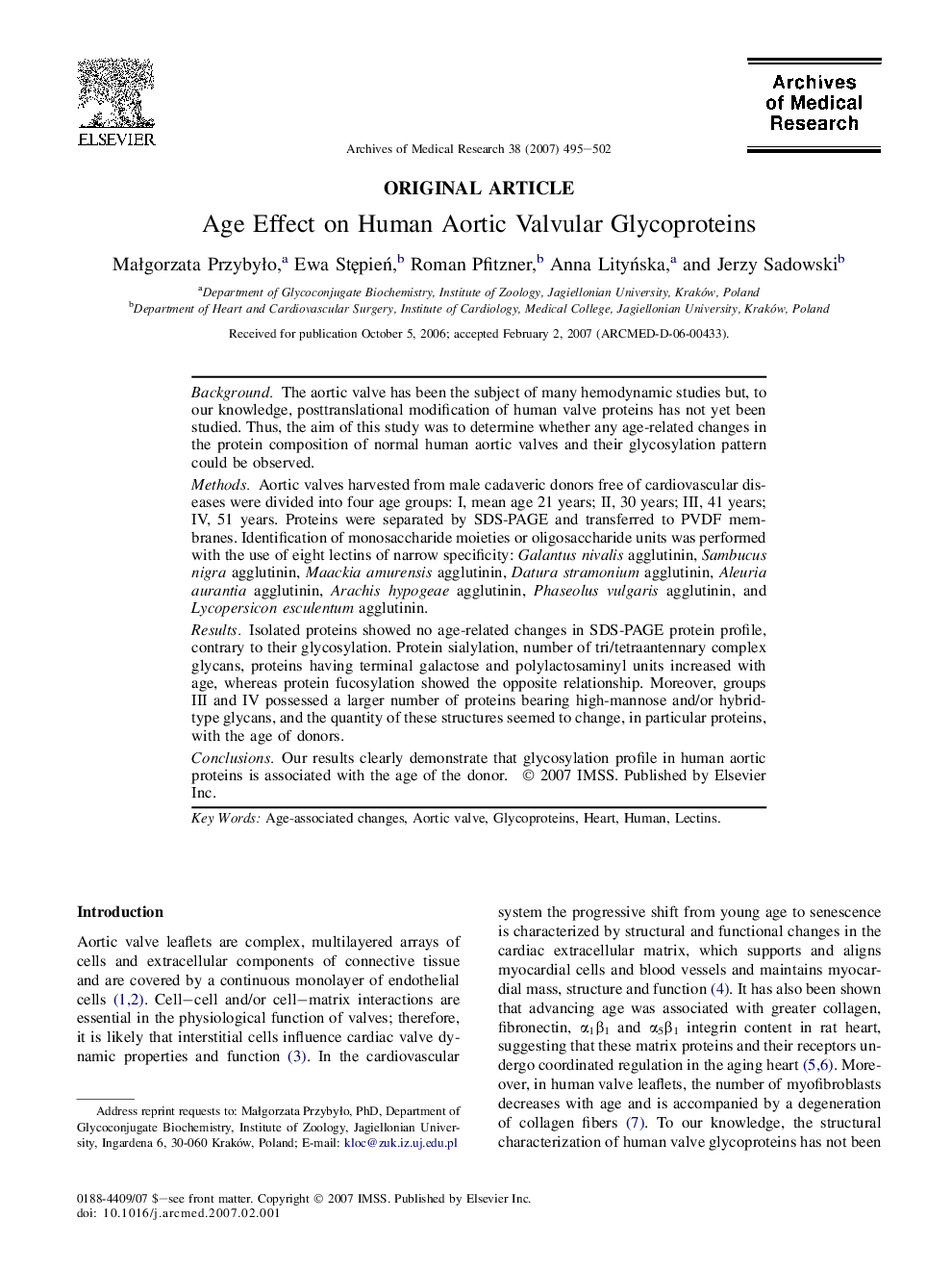| Article ID | Journal | Published Year | Pages | File Type |
|---|---|---|---|---|
| 3447756 | Archives of Medical Research | 2007 | 8 Pages |
BackgroundThe aortic valve has been the subject of many hemodynamic studies but, to our knowledge, posttranslational modification of human valve proteins has not yet been studied. Thus, the aim of this study was to determine whether any age-related changes in the protein composition of normal human aortic valves and their glycosylation pattern could be observed.MethodsAortic valves harvested from male cadaveric donors free of cardiovascular diseases were divided into four age groups: I, mean age 21 years; II, 30 years; III, 41 years; IV, 51 years. Proteins were separated by SDS-PAGE and transferred to PVDF membranes. Identification of monosaccharide moieties or oligosaccharide units was performed with the use of eight lectins of narrow specificity: Galantus nivalis agglutinin, Sambucus nigra agglutinin, Maackia amurensis agglutinin, Datura stramonium agglutinin, Aleuria aurantia agglutinin, Arachis hypogeae agglutinin, Phaseolus vulgaris agglutinin, and Lycopersicon esculentum agglutinin.ResultsIsolated proteins showed no age-related changes in SDS-PAGE protein profile, contrary to their glycosylation. Protein sialylation, number of tri/tetraantennary complex glycans, proteins having terminal galactose and polylactosaminyl units increased with age, whereas protein fucosylation showed the opposite relationship. Moreover, groups III and IV possessed a larger number of proteins bearing high-mannose and/or hybrid-type glycans, and the quantity of these structures seemed to change, in particular proteins, with the age of donors.ConclusionsOur results clearly demonstrate that glycosylation profile in human aortic proteins is associated with the age of the donor.
